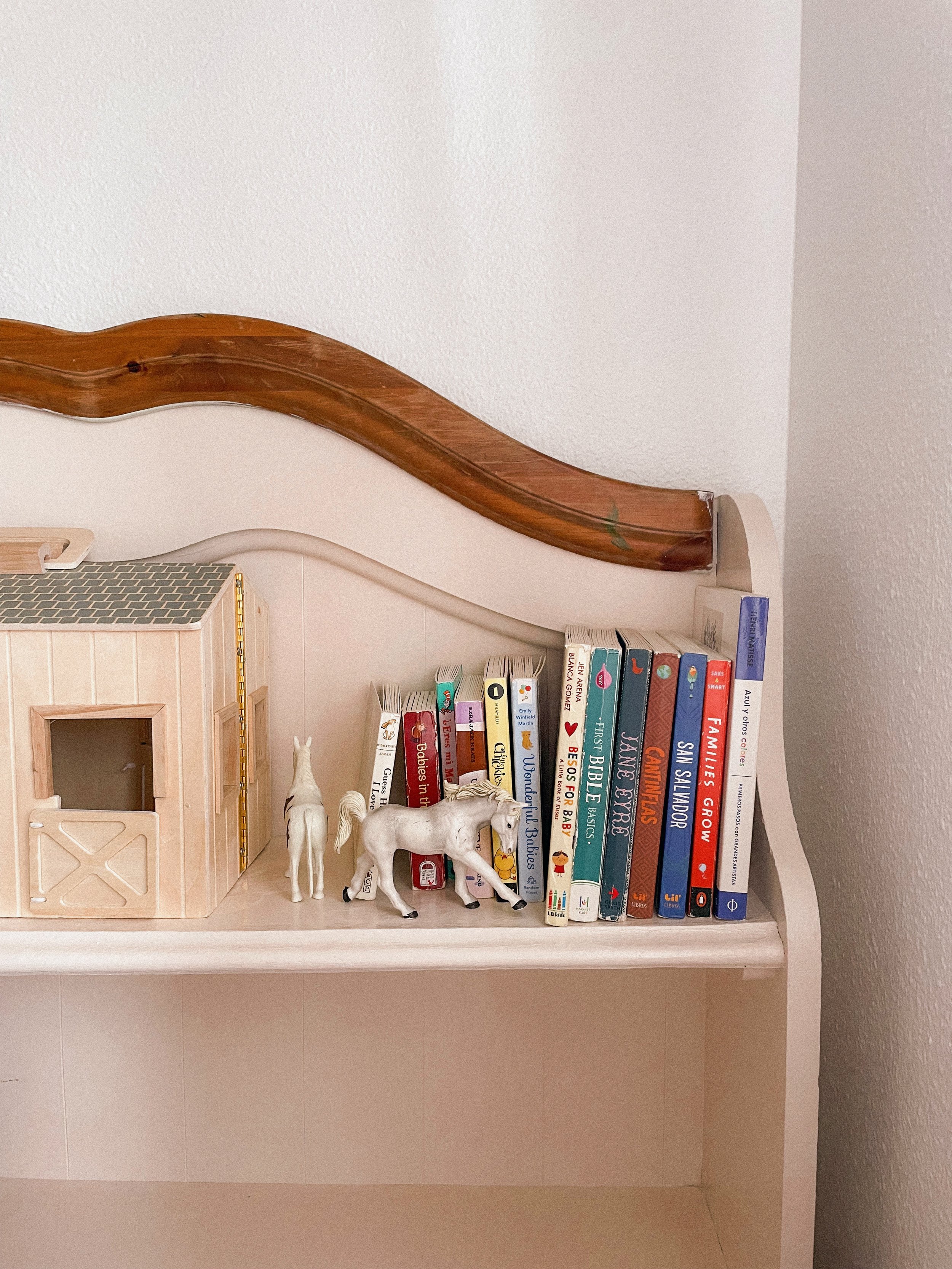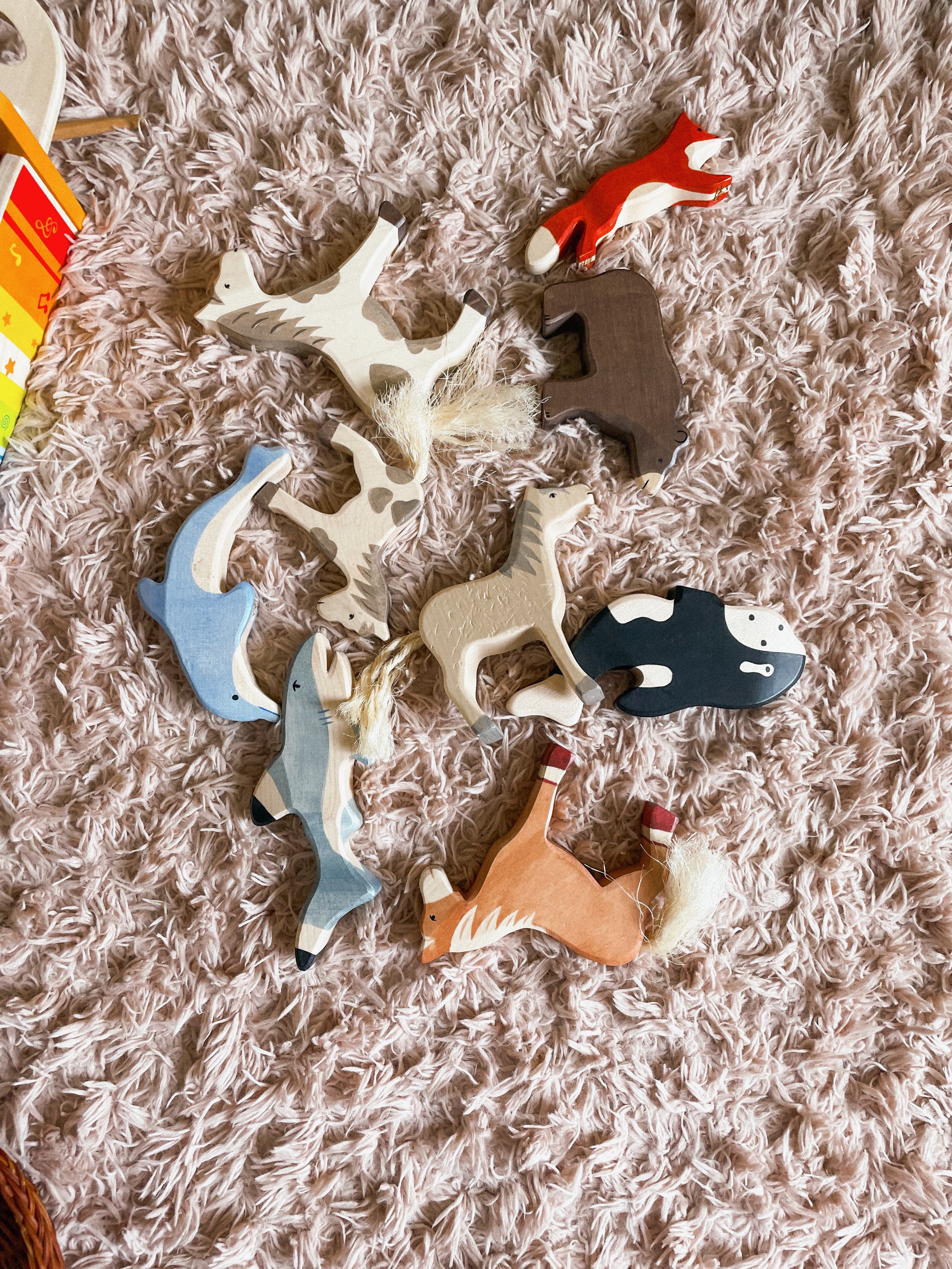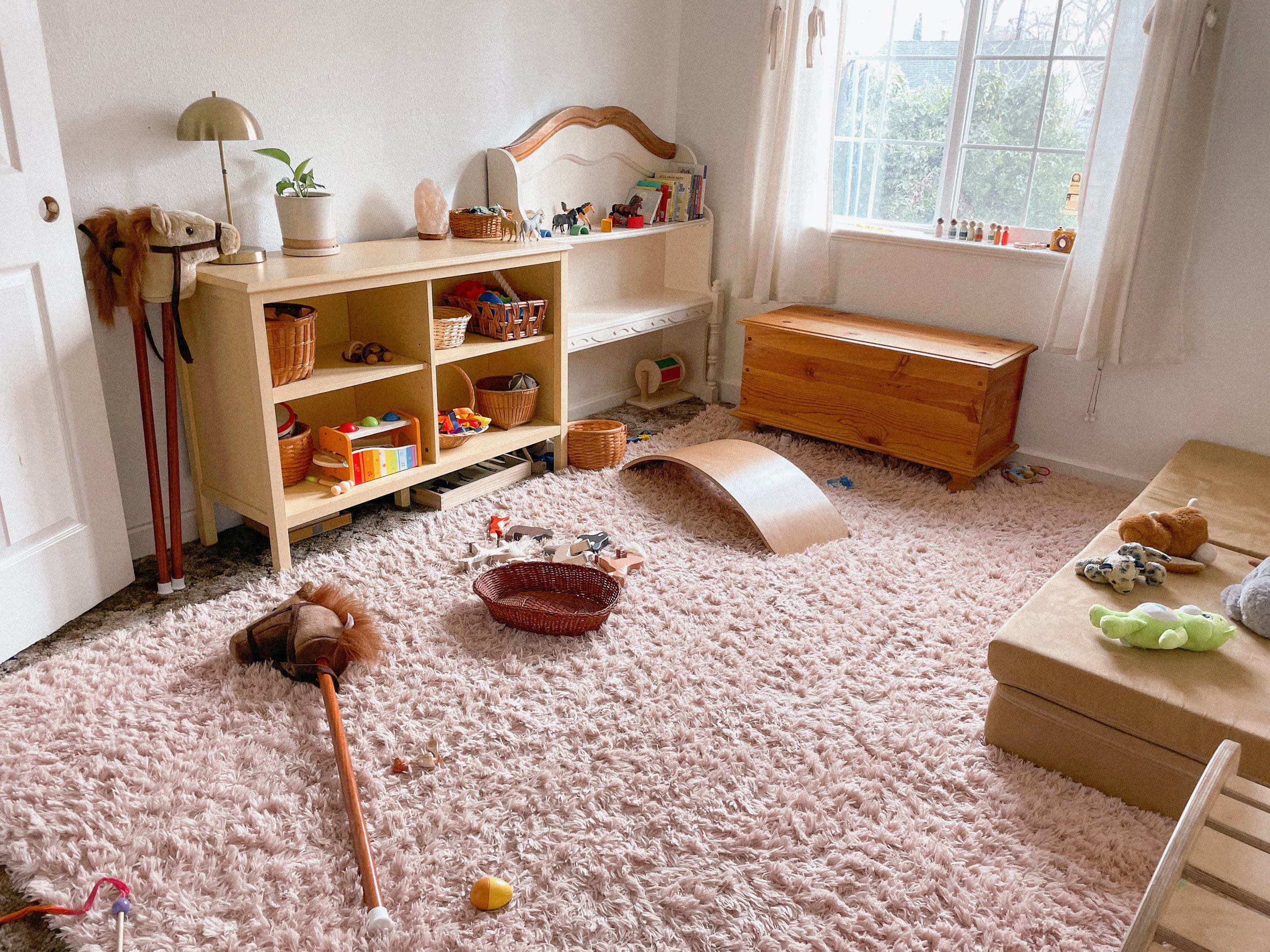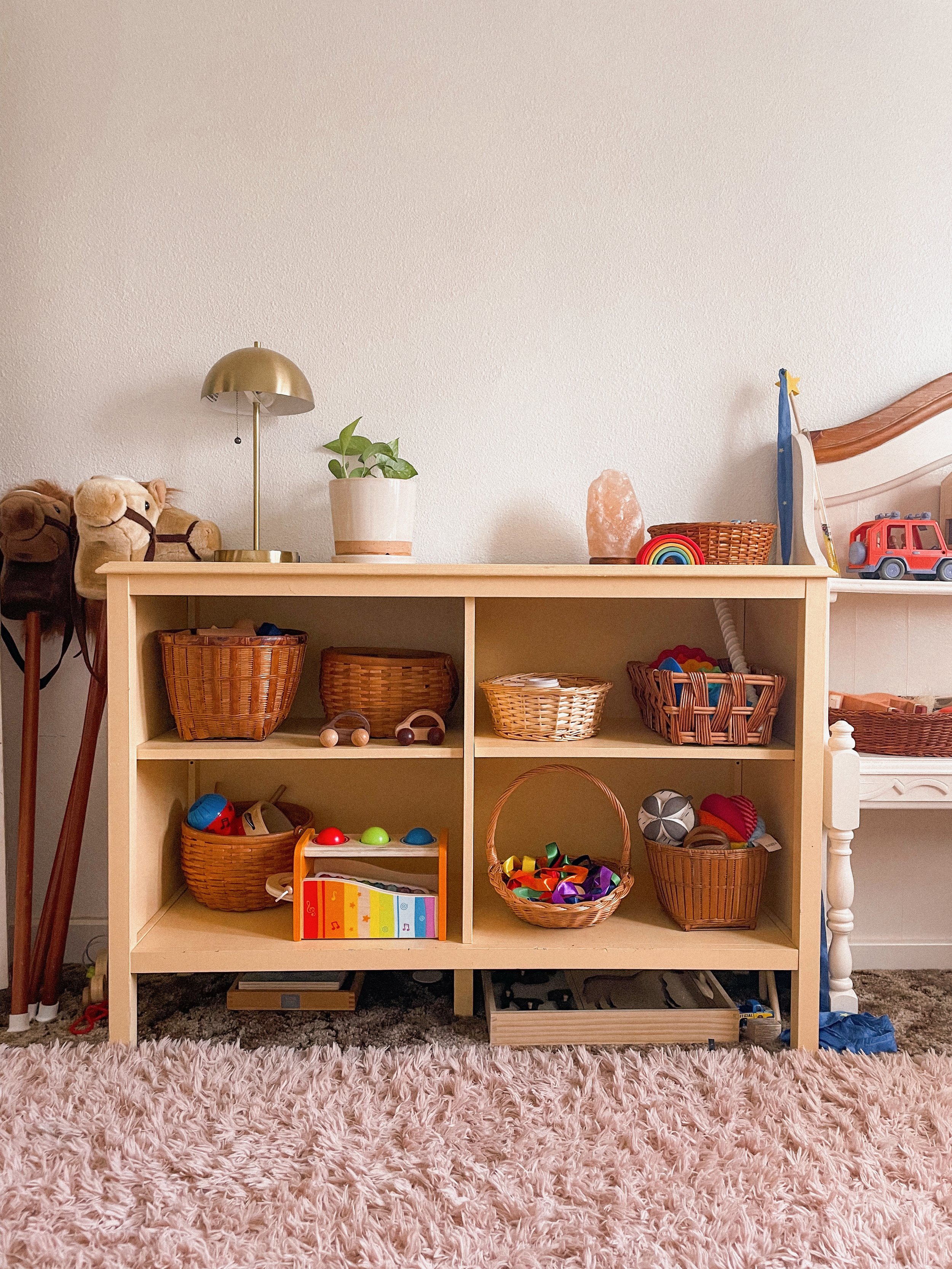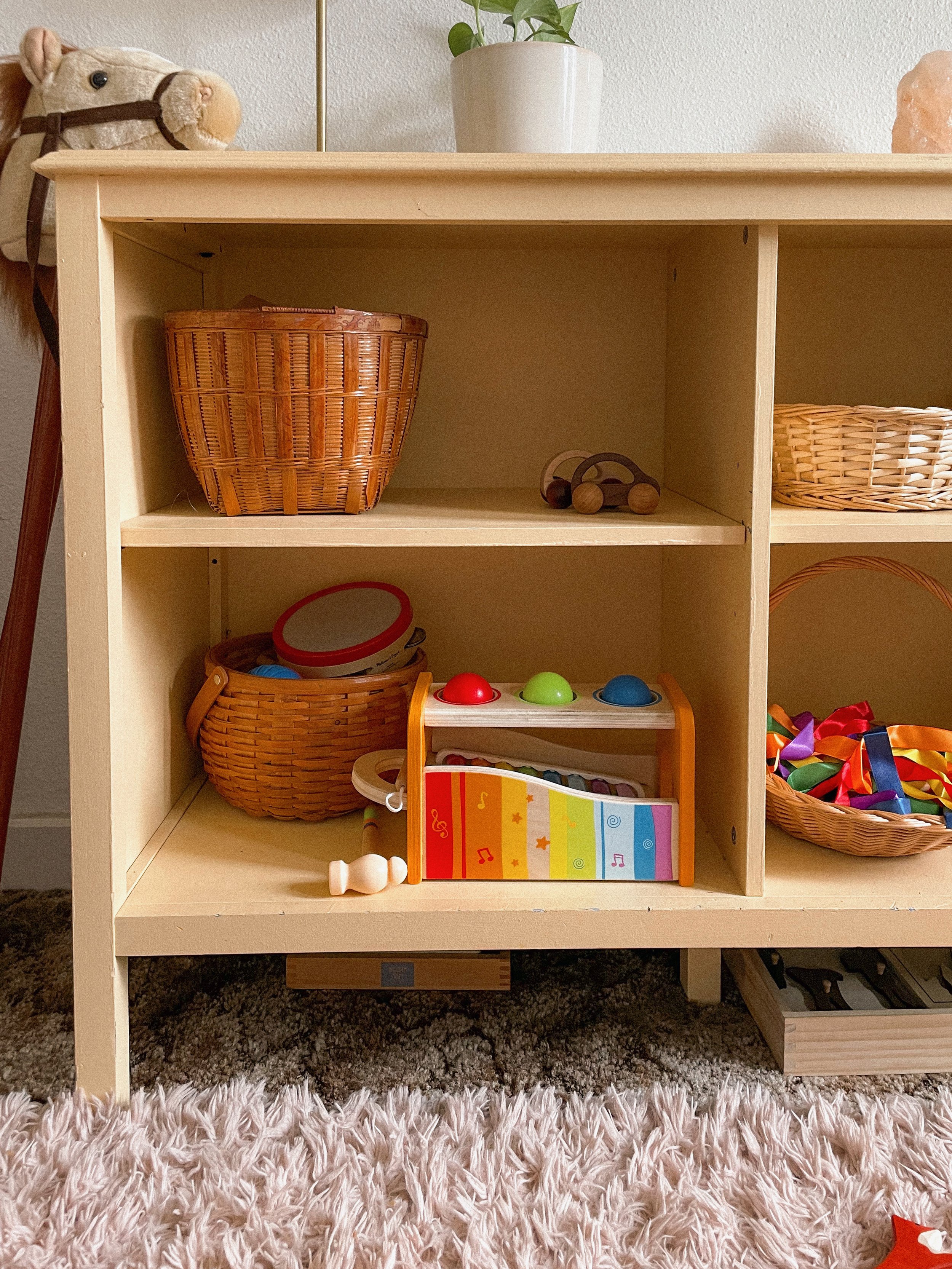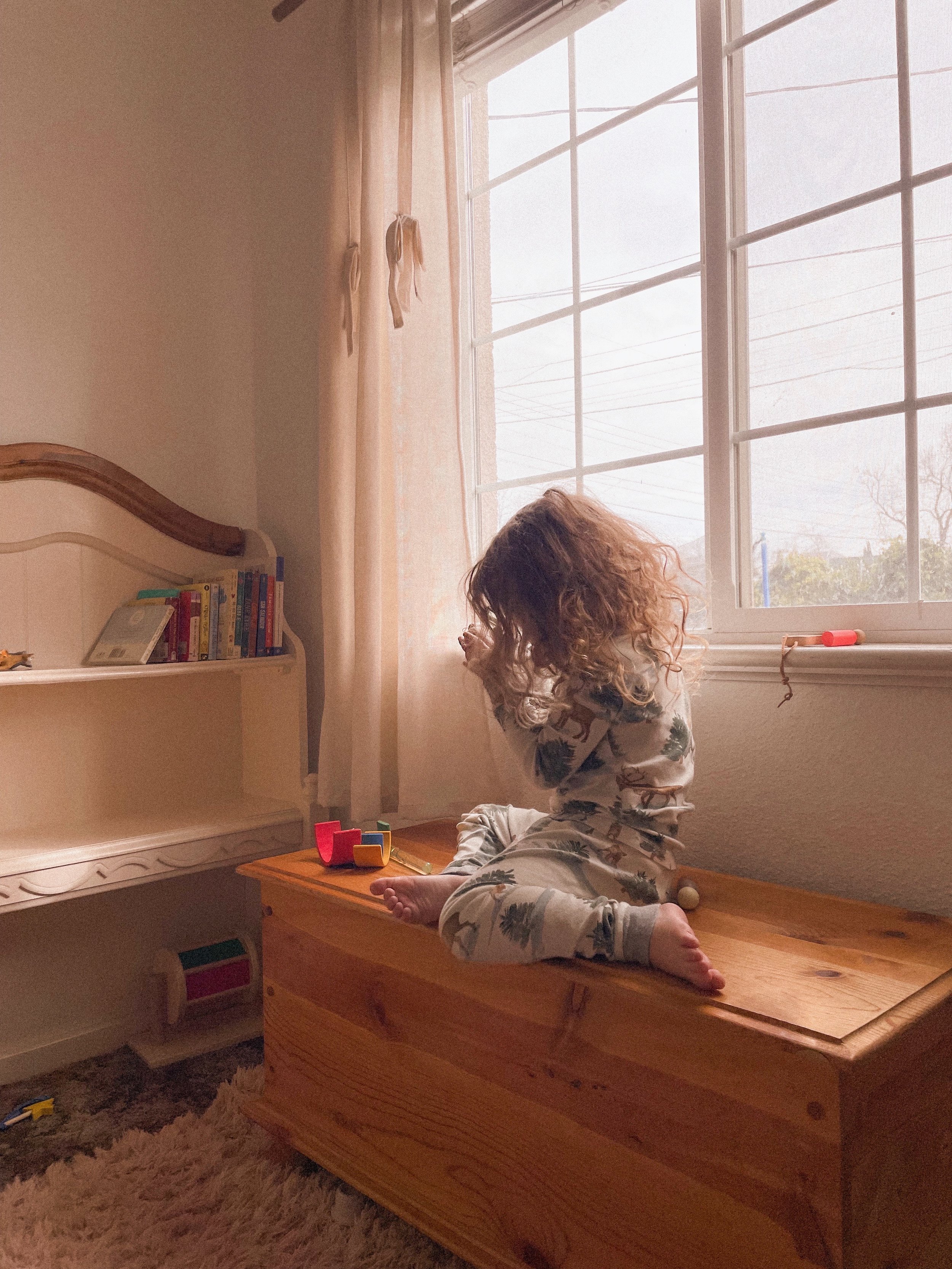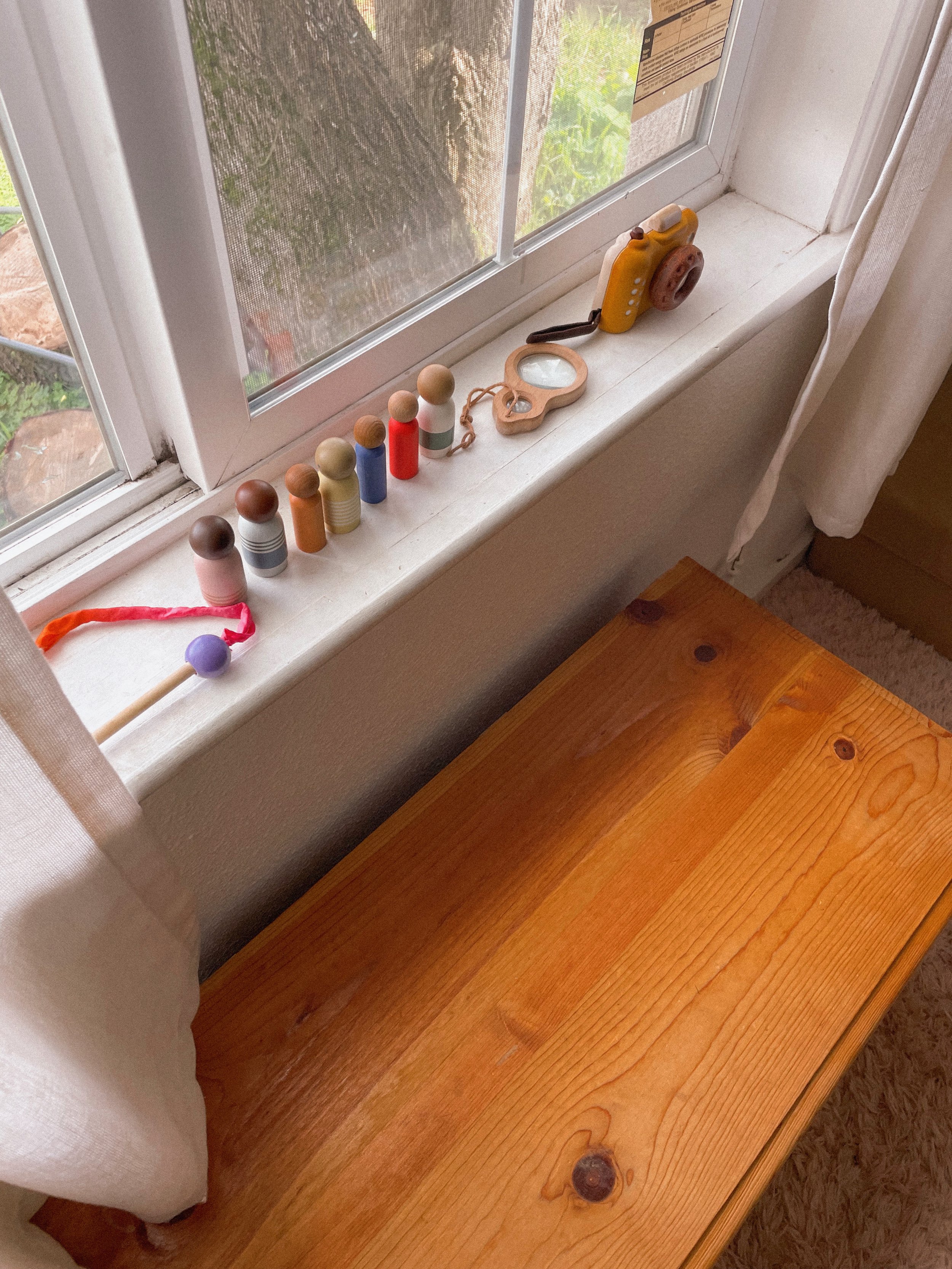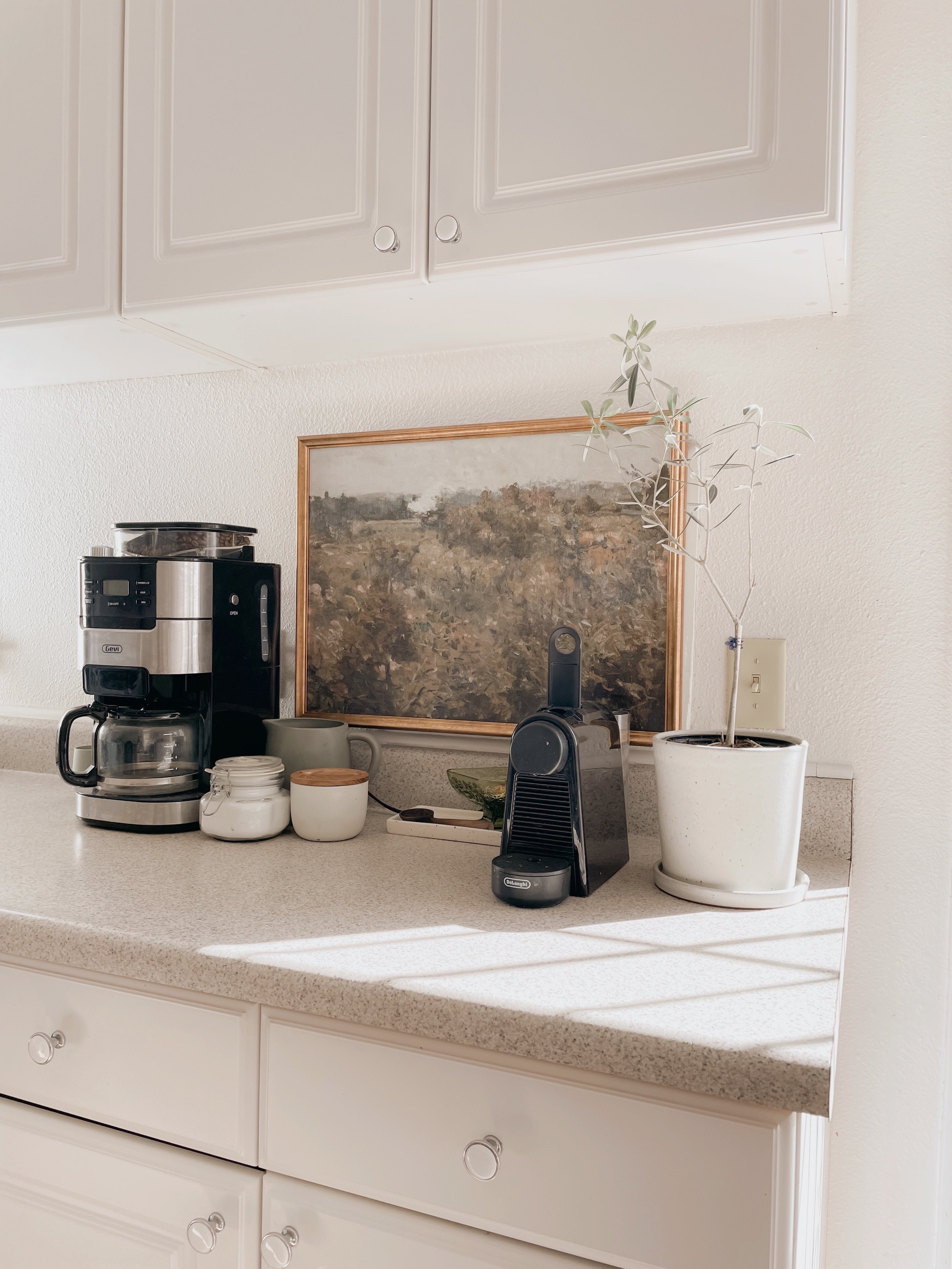making home: a waldorf-inspired playroom
As a millennial parent, I love the idea of child-led spaces and open-ended play, so it’s no surprise I found the Waldorf approach appealing. Waldorf’s emphasis on storytelling, music, poetry, art, nature, and a beautiful yet simple environment just clicked for me and my husband.
When you know, you know, right?
What’s more, I love that there’s no pressure to introduce letter drills, sight words, or other academics to children under seven. Being a first time mom to a toddler or preschooler, there were many times when I felt I needed to create some sort of curriculum at home since we couldn’t afford daycare. After doing lots of reading and podcast listening, though, I found relief in reading that the Waldorf curriculum for young children is simply to play, play outside, explore art and stories, and learn to help in the work of daily life before playing some more.
the mood board
I spent hours and hours looking into what a Waldorf play area looks like when we found out we’d be moving into a home that would allow us to have a dedicated playroom. Of course, there are a lot of simple wooden toys, which are a dime a dozen these days, but Waldorf toys tend to be a bit more primitive and simple.
There’s a general feeling of warmth in the spaces; I read that a Waldorf preschool or kindergarten will often echo the colors of sunrise with its pink, peach, and golden yellow tones. The colors are soft and blended in a technique called Lazure that makes you feel like you’re surrounded by a watercolor painting! I loved watercolor as a medium before discovering Waldorf but I’m fully obsessed with it now.
In my ideal world, we’d paint the playroom walls that signature soft, warm peach, but we only got approval for white walls in our rental so I had to find other ways to bring in those quintessential Waldorf colors.
I started with a pink shag rug to bring color, texture, and softness to the room. I’ve got simple beige curtains hanging in the room at the moment, but I’ll be swapping them for these peach muslin ones from Crate & Barrel to tie the color of the rug, painted shelves, and the play couch together.
I’m also mustering up the courage to swap out the flush mount for something like this one (or maybe a rattan one…the jury’s still out). Changing a flush mount sounds intimidating so if I chicken out, my plan B is to find a warm pale pink fabric and drape it across the ceiling to make the space feel extra soft and cozy.
The last thing on my wish list for this room is a playsilk display. I like the ones from Sarah’s Silks, but I’m also considering hacking a spare IKEA Flisat wall shelf into a display. By hacking I definitely mean hanging upside down!
The playroom tour
toy storage
shelves
I bought a clearance bookshelf from Target (after trying in vain to find one in the size I needed secondhand) and painted it a sunny yellow-orange color. I’ll be honest, this color is nice but it’s not what I had envisioned for the room. But that’s what I get for buying paint without my phone or a reference photo! Aside from the color paint I chose, it’s a great bookshelf! My eldest uses the top of it as a play surface when he needs a bit of space from his sisters and there are lots of options for storing the many thirfted and collected baskets that corral the toys in the current rotation.
One shelf was not quite enough to store three children's toys, so I took to Facebook Marketplace to look for something with a bit more character. I found what I think is the top piece of a hutch and loved its turned details and curved wood trim. I painted it in Magnolia Home’s Dutch Tulip and I couldn’t be happier with the color! It’s the exact pale peachy pink I’d hoped it would be!
Next time we get a break from the rain I’ll paint the other shelf to match.
toy chest
I knew from observing my kids that they needed a flat surface to play with their blocks and figures.
I didn’t love the idea of a toy chest or toybox — I have vivid memories of my childhood toybox being an overwhelming, unorganized dumping ground for toys, plus I can’t tell you how many times my sister and I dumped everything out just so we could hide in it!
However! We found this vintage handmade chest at the tiniest estate sale and brought it home. It served as a costume chest for a while, but it turns out that my children aren’t that interested in playing dress up, so I moved it under the window that overlooks our backyard and used it to store the well-loved-but-always-ending-up-on-the-floor-all-over-the-house toys.
In the few weeks since I organized the toy storage, I have noticed that my kids aren’t playing with the toys in the toy chest at all.
Out of sight, out of mind, you know?
Moving forward I’ll be experimenting with creating invitations to play with the toys that live in the chest and see how that works!
It’s all about tinkering and experimenting.
gross motor + pretend play
We’ve been collecting gross motor toys since my oldest was young because he’s a sensory-seeking child. We started with a balance board from Kinderfeets which has held up incredibly for four years and counting! A couple of years later, we added a climbing arch/rocking toy from Wiwurka that can hold more than one child — my 18-month-old has been climbing up it for months now and it gets used as a puppet show theater, a tunnel, and a cozy spot to read books all the time. It was The Big Gift a few Christmases ago and has also held up wonderfully!
The final gross motor toy we added to our collection was a Nugget play couch in Sandcastle—a warm, saturated neutral to blend with the toys' wooden tones. I know Nugget play couches are a trendy item to have, but let me be the latest to tell you that they’re worth it — that is, if you have the floor space to spare and if your children are big into fort building, jumping off of things, making obstacle courses, and other sensory seeking play!
If you don’t have the floor space for a play couch, folding tumble mats like the ones from IKEA are amazing. We got ours from a friend who didn’t need them anymore and — even with the Nugget couch — they get brought out almost daily. I store them behind the door so they’re easy to grab but not taking up floor space when they’re not in use.
We removed the sliding closet doors when this room was our oldest two’s bedroom to give us some extra floor space and make the room feel larger. For now, I’ve put the vintage baby doll cradle (filled with too many stuffed animals) and their handmade rocking chair in the closet to create a little nook for playing house. I’ll be honest, my kids do not seem interested in playing in this space, so this may turn into its own little project
That, or we’ll stick the doors back on and use it as additional storage!
the process
The declutter and refresh process took me a week, but this playroom is a year in the making!
I slowly collected the furniture, repurposed what we had, and spent lots of time observing my children’s play and reflecting on how to create a space that lends itself to open-ended play.
I love how the room looks but even more than that, I love that my kids love it, too. They have just enough options where they can be creative while still being able to tidy their toys and books in about five minutes (a good guide I got from the book Simplicity Parenting).
If you’d like to see how I took the playroom from a hot mess to a magical space of play, plus a detailed look into how the toys are organized, I documented the week-long project in a vlog on my YouTube channel!
